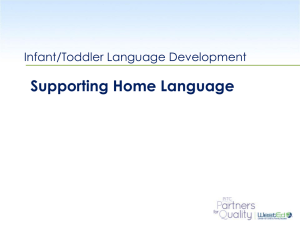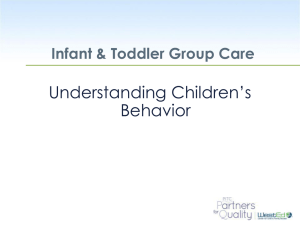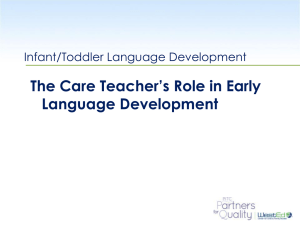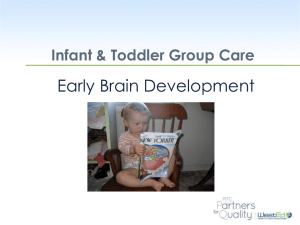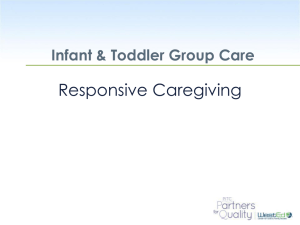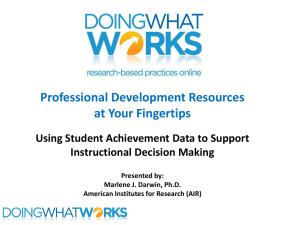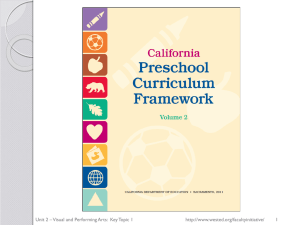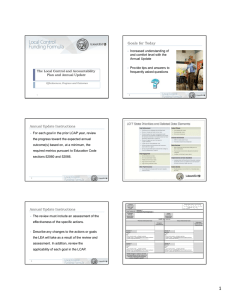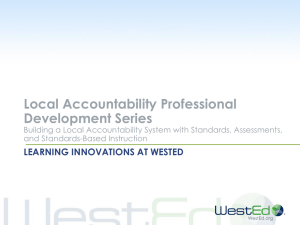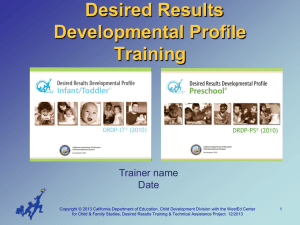Environments - The Program for Infant/Toddler Care
advertisement
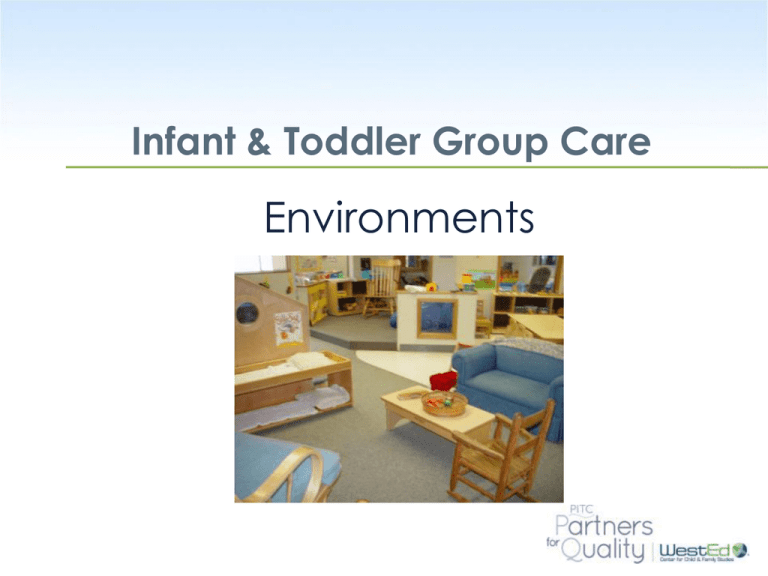
Infant & Toddler Group Care Environments WestEd.org Learning Objectives Participants will be able to: • Evaluate I/T care environments in terms of health and safety issues. • Discuss why adult comfort and convenience are important considerations for responsive caregiving. • Explain why child choice and child-size furnishings and equipment are necessary. • Provide examples of how an I/T care environment can provide flexibility and encourage movement. • Discuss how the play environment is curriculum. WestEd.org Activity: What kind of environment would you prefer? • Imagine for a moment that you are “older” and now unable to live independently. Your family is considering a number of retirement homes, and need your input on what kind of environment you prefer. • Take a few minutes to answer the question for yourself, and then discuss your responses in a small group. WestEd.org Reflect… Think about places in your infant/toddler program that: • You like best o Why? What makes them effective, positive, inviting, enjoyable? • You like least o Why? What makes them uninviting, not very enjoyable or pleasant, difficult? Keep your thoughts in mind as you watch the DVD “Space to Grow”. WestEd.org Space to Grow: Creating Child Care Environments for Infants and Toddlers (Second Edition) WestEd.org Space to Grow: Safety and Health Concept 1: Safety Concept 2: Health WestEd.org Dyad Discussion: Safety and Health Was there anything you saw that you would like to adapt for your program? “Space to Grow: Creating a Child Care Environment for Infants and Toddlers” WestEd.org Space to Grow: Comfort and Convenience Concept 3: Comfort Concept 4: Convenience WestEd.org Comfort for Adults and Children What do you see in this scene that provides comfort for children and adults? WestEd.org Dyad Discussion: Comfort and Convenience • What do you have in your I/T environment that provides comfort for adults? Children? • What was an example related to comfort and convenience that you could adapt to your classroom or family child care home? “Space to Grow: Creating a Child Care Environment for Infants and Toddlers” WestEd.org What is convenient about this Infant eating area? WestEd.org Comfort in Family Child Care & Centers Family Child Care Center WestEd.org Does your environment have soft, cozy spaces? WestEd.org Space to Grow: Child-Sized Furniture and Flexibility Concept 5: Child-Sized Furniture Concept 6: Flexibility WestEd.org Dyad Discussion: Child-Sized Furnishings and Flexibility • What percentage of your furnishings are sized for infants and toddlers? • What is your plan to add child-sized furnishings and equipment for your program? “Space to Grow: Creating a Child Care Environment for Infants and Toddlers” WestEd.org Space to Grow: Encourage Movement and Child Choice Concept 7: Encourage Movement Concept 8: Child Choice WestEd.org Dyad Discussion: Child-Sized Furnishings and Flexibility • Does your indoor and outdoor environment encourage movement? How could it be improved? • In what ways does your environment allow for child choice? How could child choice be enhanced? “Space to Grow: Creating a Child Care Environment for Infants and Toddlers” WestEd.org 6-18 month room: various levels throughout classroom Note that the curtains and fabric on the walls help to create a more home-like environment. WestEd.org Creating Home-Like Environments Following are a few photos of an infant/toddler center’s efforts to create a more home-like environment in their large center. WestEd.org WestEd.org WestEd.org WestEd.org The curtains, green ivy, and fabric hanging from the ceiling, along with plants in the room, create a more home-like and calming environment. WestEd.org Family photos are displayed at the child’s eye level. WestEd.org Clutter-free shelves with similar toys grouped together. Children understand where items are located, making a child’s selection of choices easier, and clean-up time more manageable. WestEd.org The shelves for this infant room are very low and accessible to the children. WestEd.org Family-style eating environment promotes children’s learning of socialization skills and self-help skills, by allowing for passing foods to friends and serving themselves. Language is promoted by identifying color and foods. WestEd.org More home-like environmental features. WestEd.org Another home-like environment. WestEd.org Toys displayed in baskets and doilies create a home-like atmosphere. WestEd.org Activity: Taking Infants’ Perspectives In closing, let’s watch a fun video clip in which two teachers perform a “white glove test” on their infant/toddler room. Before the next session, consider performing a “white glove test” on your infant/toddler environment. WestEd.org Taking Infants’ Perspectives: The White Glove Test WestEd.org Reviewing the Learning Objectives: Participants will be able to: • Evaluate I/T care environments in terms of health and safety issues. • Discuss why adult comfort and convenience are important considerations for responsive caregiving. • Explain why child choice and child-size furnishings and equipment are necessary. • Provide examples of how an I/T care environment can provide flexibility and encourage movement. • Discuss how the play environment is curriculum. WestEd.org
